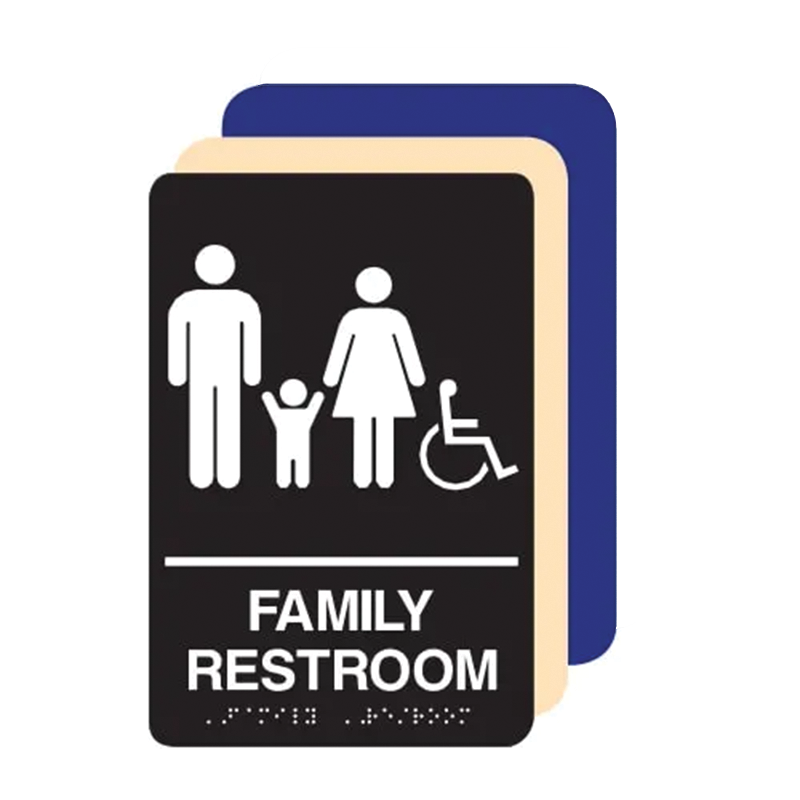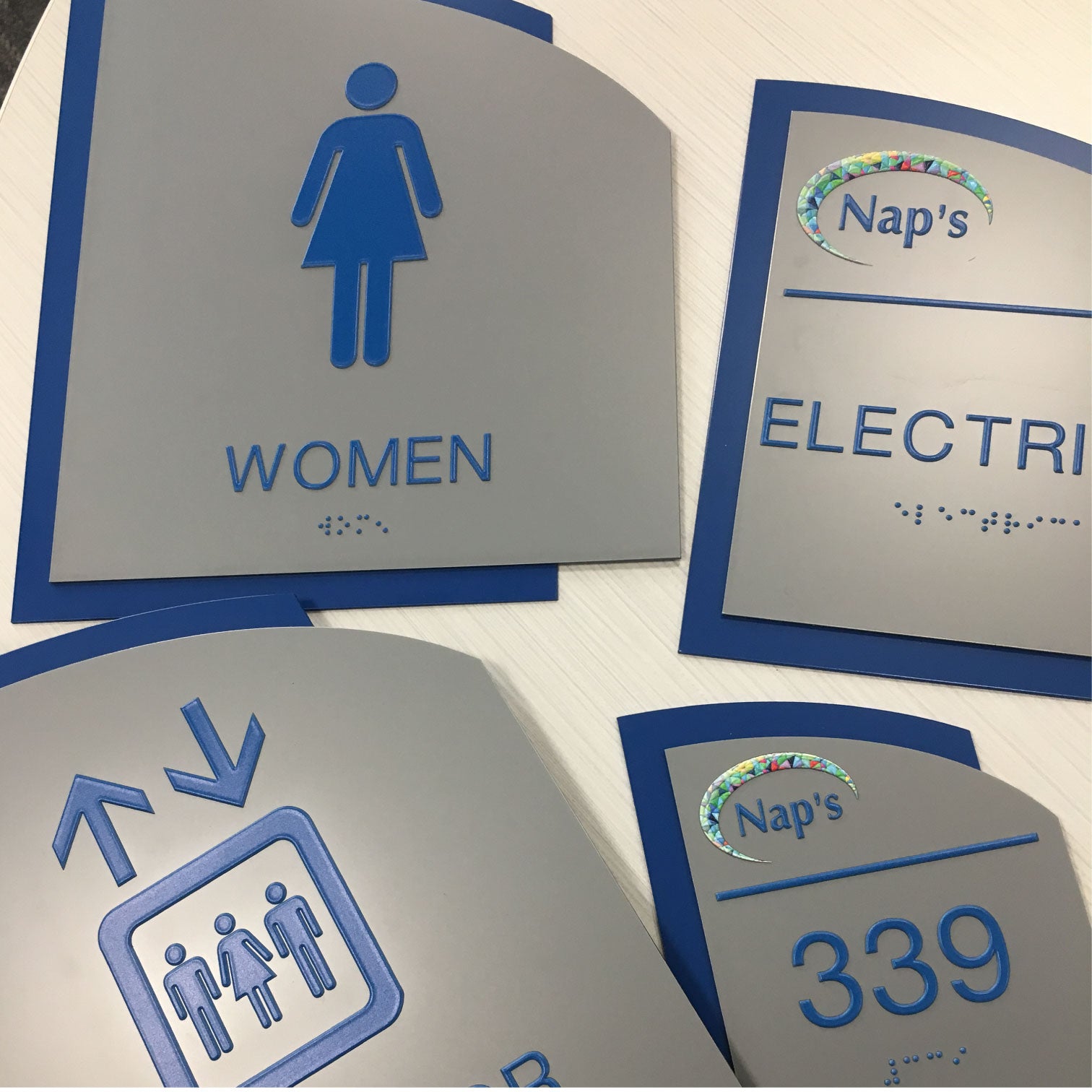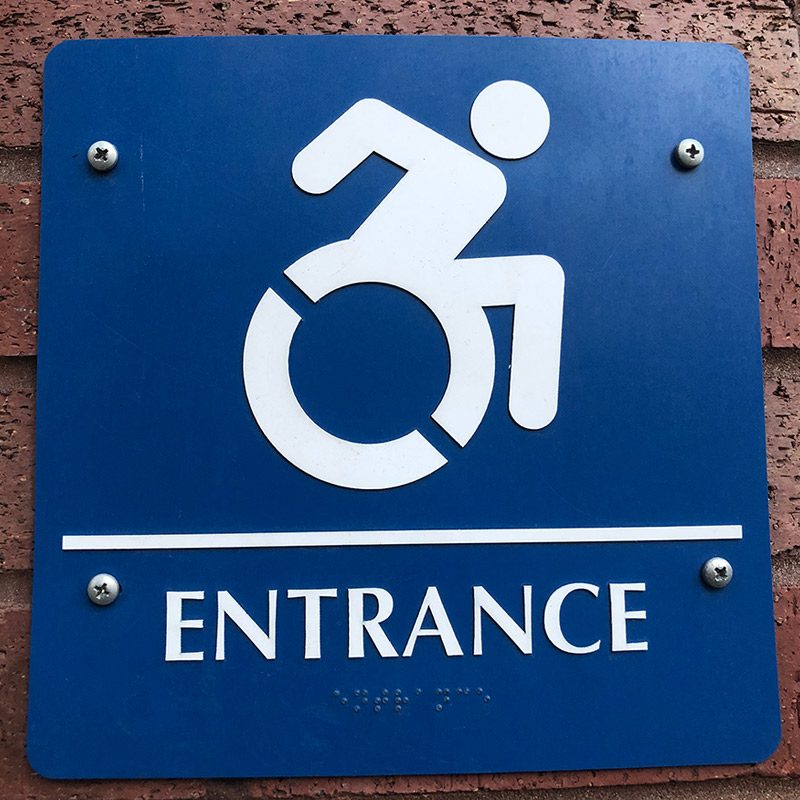Discover the Significance of ADA Signs in Public Spaces
Discover the Significance of ADA Signs in Public Spaces
Blog Article
Checking Out the Secret Functions of ADA Signs for Improved Accessibility
In the realm of ease of access, ADA indicators serve as quiet yet powerful allies, making certain that areas are comprehensive and navigable for individuals with impairments. By integrating Braille and tactile elements, these indications break obstacles for the visually impaired, while high-contrast shade systems and understandable fonts provide to varied aesthetic demands.
Importance of ADA Conformity
Ensuring conformity with the Americans with Disabilities Act (ADA) is critical for promoting inclusivity and equal accessibility in public areas and offices. The ADA, passed in 1990, mandates that all public centers, employers, and transport services fit people with disabilities, ensuring they delight in the exact same rights and possibilities as others. Conformity with ADA criteria not just satisfies legal obligations but likewise improves an organization's reputation by demonstrating its dedication to diversity and inclusivity.
One of the essential elements of ADA compliance is the application of available signage. ADA indicators are developed to make certain that individuals with impairments can easily browse through structures and rooms.
Moreover, sticking to ADA regulations can minimize the danger of potential penalties and legal consequences. Organizations that fail to abide with ADA guidelines may deal with suits or charges, which can be both economically troublesome and destructive to their public picture. Therefore, ADA compliance is important to fostering an equitable setting for everybody.
Braille and Tactile Elements
The incorporation of Braille and responsive components right into ADA signs personifies the concepts of access and inclusivity. It is typically positioned underneath the matching message on signs to make certain that individuals can access the info without aesthetic help.
Tactile components prolong beyond Braille and consist of raised characters and symbols. These elements are designed to be discernible by touch, enabling people to determine room numbers, washrooms, exits, and other essential locations. The ADA sets certain standards regarding the size, spacing, and placement of these tactile aspects to optimize readability and make certain uniformity throughout various environments.

High-Contrast Color Schemes
High-contrast color pattern play a critical function in boosting the exposure and readability of ADA signage for individuals with visual impairments. These schemes are important as they take full advantage of the distinction in light reflectance between message and background, making sure that indicators are conveniently discernible, also from a range. The Americans with Disabilities Act (ADA) mandates using details color contrasts to accommodate those with limited vision, making it an essential aspect of conformity.
The efficacy of high-contrast shades hinges on their capacity to stand apart in various lights conditions, including dimly lit environments and locations with glow. Usually, dark text on a light background or light message on a dark background is used to accomplish optimal comparison. For example, black text on a white or yellow background provides a raw aesthetic difference that assists in quick recognition and understanding.

Legible Fonts and Text Dimension
When taking into consideration the design of ADA signage, the option of clear fonts and ideal text dimension can not be overemphasized. These aspects are important for making certain that signs are easily accessible to individuals with aesthetic problems. The Americans with Disabilities Act (ADA) mandates that font styles should be not italic and sans-serif, oblique, script, extremely ornamental, or of uncommon type. These needs aid make sure that the message is quickly readable from a range and that the characters are appreciable to varied audiences.
The size of the text additionally plays an essential role in availability. According to ADA guidelines, the minimum text elevation must be 5/8 inch, and it must increase proportionally with watching range. This is particularly essential in public rooms where signage requirements to be reviewed promptly and accurately. Consistency in message size adds to a natural visual experience, assisting individuals in navigating environments successfully.
In addition, spacing between letters and lines is integral to readability. Sufficient spacing avoids personalities from appearing crowded, enhancing readability. By sticking to these criteria, designers can dramatically boost ease of access, guaranteeing that signs offers its desired objective for all people, regardless of their visual capacities.
Efficient Positioning Techniques
Strategic positioning of ADA signage is crucial for optimizing accessibility and making certain compliance with legal standards. Correctly located indications lead people with disabilities properly, promoting navigating in public spaces. Secret factors to consider include closeness, height, and visibility. ADA guidelines specify that indicators need to be installed at a height between 48 to 60 inches from the ground to ensure they are within the line of view for both standing and seated people. This typical height range is critical for inclusivity, making it possible for wheelchair individuals and people of varying elevations to accessibility details easily.
In addition, signs must be put adjacent to the lock side of doors to allow simple recognition before entrance. Consistency in indication placement throughout a center improves predictability, decreasing confusion and boosting overall user experience.

Verdict
ADA signs play a crucial function in promoting availability by integrating attributes that deal with the needs of individuals with handicaps. These elements collectively foster an inclusive environment, underscoring the importance of ADA compliance in ensuring equivalent accessibility for all.
In the world of accessibility, ADA indications offer as quiet yet powerful allies, making certain that areas are comprehensive and navigable for people with disabilities. The ADA, passed in 1990, mandates that all public centers, companies, and transportation solutions accommodate people with handicaps, ensuring they delight in the very same civil liberties and possibilities as others. ADA Signs. ADA signs are developed to ensure that individuals with impairments can easily navigate via buildings and areas. ADA guidelines state that indications should be placed at a height between 48 to 60 inches from the ground to guarantee they are within the line of view for both standing and seated other people.ADA indicators play a vital role in advertising access by integrating features that address the needs of individuals with impairments
Report this page